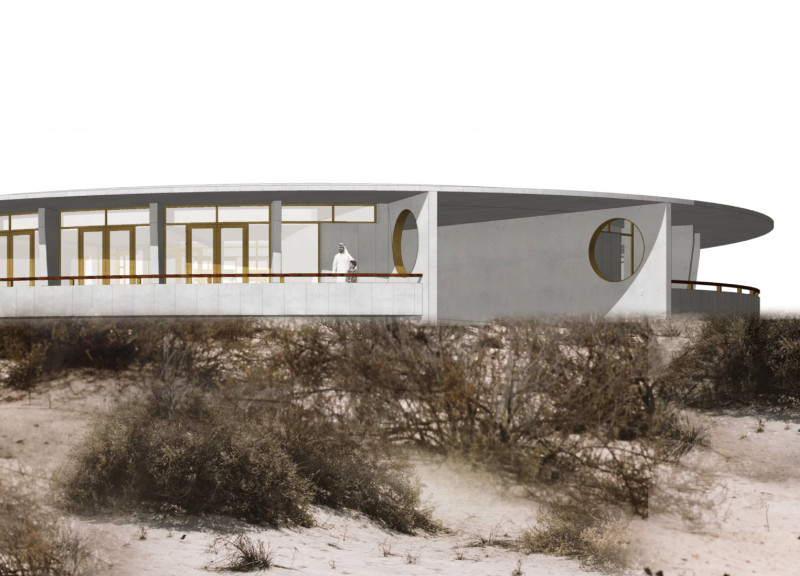5 key facts about this project
The Abu Dhabi Flamingo Visitor Center is located in a unique ecological area, serving as a hub for visitors interested in the rich biodiversity of the nearby nature reserve. Designed with a circular shape, it responds to the intersecting roads that provide access to the site, ensuring efficient use of land while protecting the existing landscape. This layout encourages exploration and interaction, making it a welcoming space for those looking to connect with nature.
Spatial Arrangement
The design is centered around a large water fountain and courtyard, forming a focal point that promotes social gathering and relaxation. Key spaces, including the training room, display area, café, and shop, are thoughtfully positioned to facilitate easy movement and clear navigation. This spatial arrangement not only serves practical needs but also enhances the overall experience for visitors.
Climate Control and Sustainability
Natural ventilation plays an important role in the visitor center's design, with the water fountain contributing to a cooling effect throughout the interior. By using natural elements for temperature regulation, the building minimizes dependence on mechanical cooling systems. This approach reflects a growing awareness in architecture of the need for environmentally friendly and resource-efficient solutions.
Materials and Structural Features
The choice of materials such as hardwood, brass, and in-situ concrete is significant to the project's vision. Hardwood and brass add an appealing aesthetic and connect the structure to its ecological context, while in-situ concrete allows for flexible and durable design variations. Together, these materials ensure that the building is not only functional but also visually integrated into its surroundings.
The visitor center's sections and elevations illustrate the careful consideration of its relationship with the natural environment. Features like the extensive green roof promote biodiversity and mitigate heat gain. This thoughtful integration is evident in details such as the courtyard, where the tranquil water feature invites a moment of pause and reflection amid the beauty of the landscape.






















































